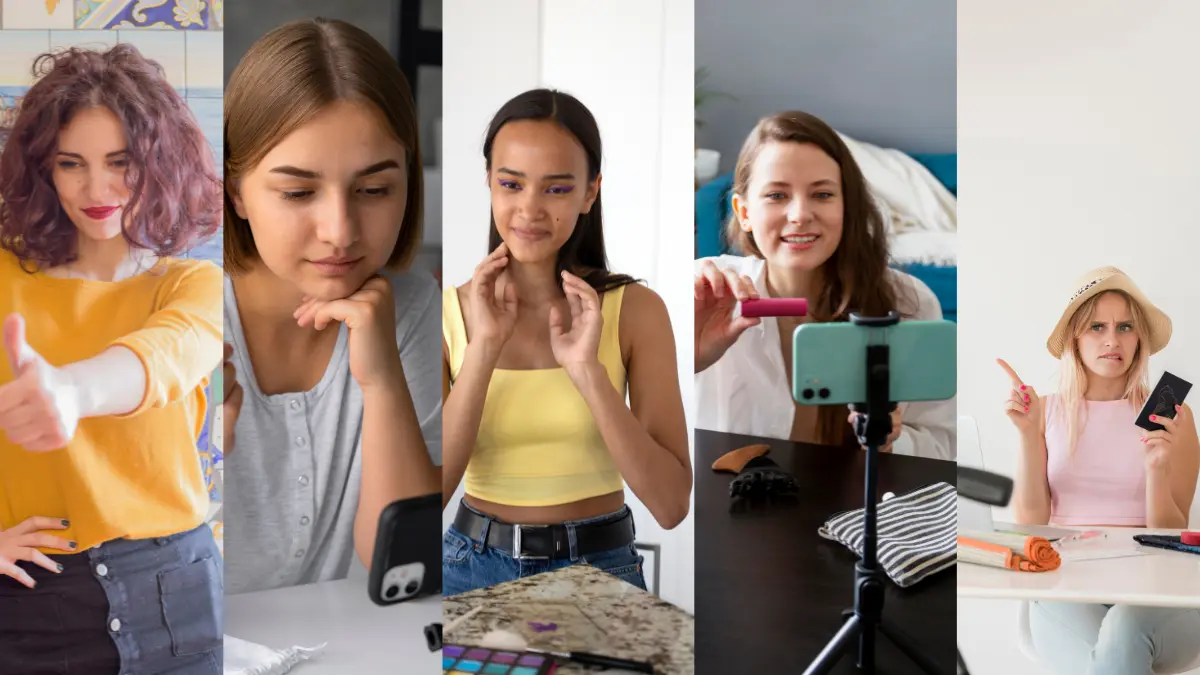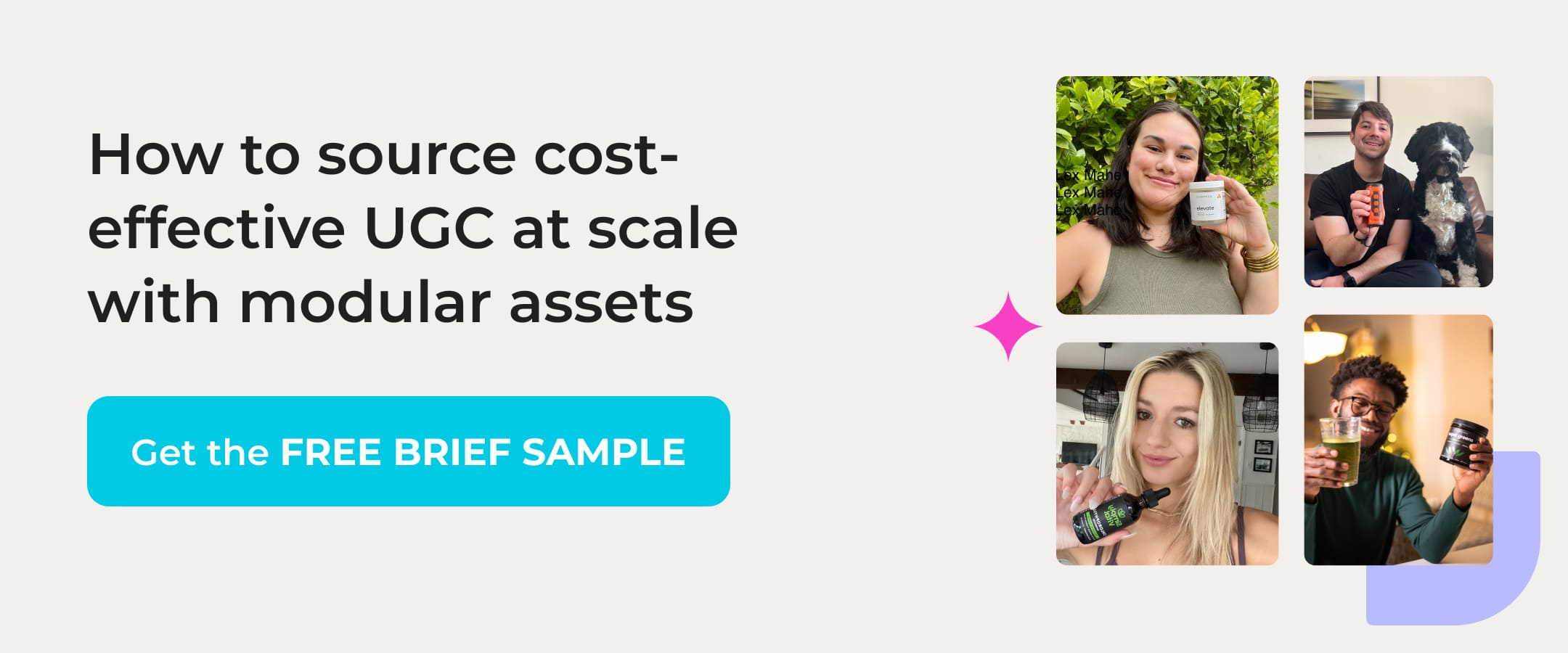What is a UGC Contest?
A UGC contest is a promotion where entrants make content about a brand and share it online, usually on social media, for a chance to win something of value.
Each entry must follow simple rules (usually a hashtag, tag, or direct upload) to be valid.
Contests can be judged on skill (best photo, most creative video) or run as sweepstakes (random draw) as long as the rules outline who is eligible and how winners are chosen.
Rewards can range from gift cards and exclusive products to experiences.
Traditional influencer marketing cannot compare with the results of a UGC contest because it doesn’t encourage as much creativity, a wide range of social media engagement, and brand awareness.
People can sense originality, and UGC gives room for that as users are encouraged to be honest and true to themselves even while creating for the brand.
In the long run, even after the contest has ended, these social media posts serve as social proof for the brand.
Keep scrolling to learn more about UGC contests.
3 UGC Contest Examples to Get Inspired by
In this section, we explore three UGC contest examples, what they entailed, and the results they got.
Example #1: Starbucks
Starbucks’ UGC contest was a photo contest where users needed to upload a creative photo with the hashtag #redcupcontest.
The best photos were then uploaded on Starbucks’ Instagram feed, and 9 people stood a chance to win $500.

Image Source: Instagram
This contest was very effective for many reasons.
First, Starbucks wanted its users to be creative in a simple way. Just with an Instagram photo. A selfie even.
It was a kind of storytelling that portrayed users as being part of their own coffee story. They had to come up with original designs and ideas that represented their feelings or ideas about coffee.
Also, Starbucks used a hashtag that pointed to the brand and would still point to the brand even after the contest was over.
They also built a deep connection with their users by featuring them on the Starbucks page for millions of viewers to see. It showed that Starbucks valued their customers and saw them as part of the brand.
Also, it was the holidays and Starbucks used the contest to inspire excitement for the holidays and the weather.
The results of the contest were amazing.
Starbucks had an increased brand awareness, as the hashtag drove high engagement and the best entries were featured on the brand’s feed.
Example #2: Chobani
The Chobani UGC contest was a Tiktok hashtag challenge encouraging users to create videos using the hashtag #switchthechobaniflip.
The prize was a special product that wouldn’t be sold in stores.

Image source: TikTok
The goals of the campaign were to increase their audience on Tiktok and use the platform to reach fun-loving, vibrant users who were active there.
In return, they weren’t just promising them a new product. They were selling a feeling of exclusivity by rewarding with a gift that would not be sold in stores.
A different pot of Chobani Flip that had the cookie dough crunch snack in the bigger compartment and greek yogurt in the smaller compartment instead of the other way round like in the regular Flip.
This limited edition was enough motivation for their users to get creative.
Also, Chobani wanted to increase the awareness of their usual Flip and they got it as more people wanted to know what the usual Flip was to tell the difference.
The contest was effective as the challenge reached a broad audience on TikTok and lifted interest in the Flip line.
Example #3: NISSAN Australia
Nissan used a branded hashtag challenge to inspire a TikTok trend. Because TikTok thrives on trends, it was easy to get people to participate. The reward was worth the contest requirement.

Image source: TikTok
Users were to create an original car commercial voiceover and get the chance to be featured in a JUKE commercial on TV. JUKE was a new car NISSAN wanted to launch.
The contest was a pre-launch strategy to increase anticipation for the new car.
The results were interesting and beyond their expectations. The contest had thousands of entries built anticipation for the JUKE launch and carried over into paid media.
A lot of people also watched the JUKE TV commercials when it was finally released to find out which entries eventually won the prize.
Now that you’ve seen all these examples, let’s go right into simple steps to creating your own UGC contest.
How to Create a UGC Contest Step-by-Step
Here’s a step-by-step guide to creating an effective UGC contest for the best results.
Step #1: Choose the right social media platform
Choosing the right social media platform for your UGC contest is the most important step to creating a buzz-worthy contest.
You should choose a social media platform that your potential customers use.
Choose the platform where your buyers already create and watch the format you want. If you need quick product demos, use short-form video. If you want photo carousels or before-and-after shots, test Instagram.
If live shopping fits, add TikTok Live.
If you sell skincare products to a GenZ audience, you’ll want to choose a platform where they are active, like Instagram or TikTok.
Also, the kind of content you want to use for the contest would determine the social media platform. For instance, a TikTok UGC would be exclusively videos since that’s what the platform supports. So, you would have a contest where users have to create video content.
Step #2: Draft simple rules and rights
Write a one-page rule set: who can enter, when it runs, how to enter, how you pick winners, prize details and approximate value, and how winners are notified.
Include a free method of entry. Add a short license so you can repost winning entries on your site, email, and ads. State any restrictions on music, third-party logos, or claims, and ask entrants to use a campaign hashtag and a clear disclosure.
Step #3: Identify your objectives
These could range from objectives like increasing brand trust, social sharing, and endorsements to specifics like increasing follower counts and increasing engagement metrics such as likes, comments, and shares.
Identifying your objectives would help you know how to go about the contest and what calls to action to promote through your contest.
Step #4: Choose the right concept
Brainstorm the right concept to use for your contest.
For a hashtag contest, you need to choose one that is catchy for the audience, users, and brand. The hashtag should be easy to remember and use.
Here’s an example of a UGC contest concept for a fictional beauty company that sells cruelty-free skincare products to a Gen Z audience.
First, they have to come up with a big idea. For this brand, their campaign ‘big idea’ would inspire their users to express their identity through skincare.
So, they can have options for a hashtag campaign like #yourskinisyou or #skindeep.
The contest can then be for users to create videos of themselves using the skincare product that best describes who they are and post them with those hashtags.
You also have to make sure that your concept is unique, suitable for the social channel, and relevant to your product or service, especially for future social media search optimization.
Step #5: Offer incentives
The right incentives would encourage participation and even inspire more creativity.
Remember, the more valuable the incentive, the more people will participate. So, you have to choose an incentive that is valuable to your audience.
You cannot have an audience of millennials and offer a ticket to a GenZ concert as your incentive. You also can’t organize a campaign on your Facebook page and reward winners with shoutouts on your Instagram page.
The incentive should be relevant and motivating.
Step #6: Collect and moderate entries
Decide how entries are submitted (hashtag only, hashtag + form, or a landing page).
Check entries daily for eligibility, originality, and safety.
Keep a short list of finalists with links and timestamps.
Step #7: Judge, announce, and repurpose
Share simple judging criteria (clarity, originality, fit to brief).
Announce winners on your site and socials.
Save raw files when possible and plan where winning content will run next.
With these steps, you should be on your way to making your brand the talk of social media.
5 Benefits of UGC Contests for Brands
Authenticity: People trust content created by other customers more than brand ads. UGC contests let fans become advocates and lend credibility to your brand.
Wide reach: Each entry introduces your brand to a new audience. Hashtag campaigns can spread quickly across social networks and even earn algorithmic boosts when engagement is strong.
Cost effectiveness: Instead of producing dozens of professional assets, brands source content from participants. Prizes and moderation cost less than a full production shoot.
Better conversions: Entries often include real product usage and testimonials. Such social proof encourages followers to click through and buy.
Brand advocacy: Participants invest time and creativity, forging a stronger bond with your brand. Even after the contest ends, they remain long‑term brand fans.
Let’s wrap things up.
Now Over to You
User generated content campaigns can bring that big marketing break that would establish and grow your brand.
So, you must get it right using high-quality creators that would set the pace for your user generated contest.
Wanna learn more about UGC? Read more here.










